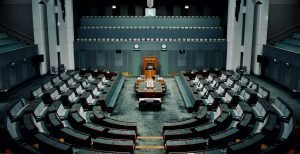
09.06.2020
Unjustified patrimonial sacrifice, period of suspicion and temporal proximity
When are the acts that precede the declaration of a company's bankruptcy at risk? The solution to this question revolves around three concepts: (1) unjustified patrimonial sacrifice, (2) period of suspicion and (3) temporal proximity.
 Por
González Varadé, Patricia
Por
González Varadé, Patricia 1.-Rescission in the Bankruptcy Law
The termination of the bankruptcy procedure is decisive in this procedure. It is regulated by Article 71 of Law 22/2003, of 9 July, on Bankruptcy, and its literal wording establishes the following: “once the insolvency has been declared, acts detrimental to the aggregate assets carried out by the debtor within the two years prior to the date of the declaration, even if there is no fraudulent intention, may be revoked”.
The conflicting element of the definition is none other than the detrimental nature of the act. While it is clear from the provision that the debtor’s intention is irrelevant for the purposes of reintegration, it is not defined with the precision that practice requires of what is and what is not likely to cause a detriment.
Contacto No te quedes con la duda, contacta con nosotros. Estaremos encantados de atenderte y ofrecerte soluciones.Paragraphs 2 and 3 of the article in question provide a positive definition, in the sense that the following will be detrimental:
- Acts of disposal free of charge.
- Payments and other acts of extinction of obligations which due dates are after the declaration of bankruptcy procedure.
- The acts of disposition against payment carried out in favour of any of the persons especially related to the debtor.
- The creation of real guarantees in favour of pre-existing obligations
- Payments or other acts of extinction of obligations that were secured by a security interest and that matured after the declaration of bankruptcy procedure.
The first two do not admit proof to the contrary, while the remaining three translate into a rebuttable presumption.
Despite the above, many more activities take place in the pre-bankruptcy period of two years than those expressly provided for in the legislative text, so the article becomes insufficient. It is therefore essential to refer to the relevant jurisprudential pronouncements.
2.-Jurisprudential treatment
The jurisprudence converges in widening the radius of extension of the pre-bankruptcy damage to which we alluded. In any case, it submits its assessment to the concurrence of three elements, which are the following:
Unjustified patrimonial sacrifice
The unjustified nature of the detriment is precisely the parameter that determines when an act is rescindable and has to be withdrawn from the aggregate assets. This was the understanding of the very interesting SAP of Barcelona, section 15ª, of February 6th 2009, which was later consecrated with the STS of October 26th . In the opinion of the aforementioned courts, the damage caused by Article 71 of the Spanish Law entails a financial sacrifice for the debtor, “unjustified in terms of the legitimate expectations of recovery by his creditors”. In short, it is about the fleeing or concealment of goods or rights that make up the debtor’s assets, with sacrifice being understood as a reduction of the assets. Fleeing, on the other hand, is arbitrary, since it prevents creditors from satisfying their collection rights in accordance with the rules that the Bankruptcy Law establishes for the bankruptcy procedure.

Si te ha interesado este artículo no dudes en leer:
Jurisdictional and administrative procedures in the Bankruptcy Procedure.
Period of suspicion
As we know, the time line drawn for rescission is two years prior to the bankruptcy procedure. The Supreme Court understands that the acts carried out during these two years are subject to suspicion (see the aforementioned sentence of October 26th), but it recalls that they are not automatically detrimental because they are suspicious. Thus, for the judicial body, payments due during the suspicious period of two years prior to the declaration of bankruptcy, provided that they are due and payable, “are generally justified and do not harm the aggregate assets”.
That is why the temporality of the action must be restricted so that the suspicion becomes a reality. In this sense, for the High Court, the rescission will operate whenever the act is close to the effective declaration of the procedure. But what does case law understand by proximity? Where does the limit lie that brings the uncertain act closer to the bankruptcy procedure?
Temporal proximity
In order to answer the above questions, the appropriate SAP of Asturias, Section 1, of July 2nd 2010 outlines a time frame based on previous court decisions. The conclusions reached by the Court are shown in the following table, with respect to when it was appropriate for each judicial body to rescind the act:
From what has been reflected, it can be deduced that the proximity to the declaration of the bankruptcy procedure translates into less than a year. Perhaps the most striking pronouncement is that of the act rescinded seven months before the declaration of the bankruptcy although, as can be seen, this is an exception, and the rest of the sentences orbit around shorter periods.
It should be noted in this regard that it is not necessary for the debtor to have precise knowledge of his insolvency. For jurisprudence it is sufficient that the debtor is aware of it (SJM of Oviedo, November 4th 2014).
3.-Special consideration of ordinary business or professional acts
In addition to what has been analysed up to now, we must mention the provisions of Article 71(5). The bankruptcy legislator wanted to make it clear that the ordinary acts of the professional or business activity of the debtor carried out under normal conditions could not, in any case, be the object of rescission. How does this fit in with what has been decided by the majority of cases? When is the payment of obligations that are due and payable an ordinary act of the activity, and when is it cancellable?
STS October 26, 2012
For the Supreme Court, in the aforementioned ruling of October 26th 2012, which is intended to be avoided through this section is “the ineffectiveness of acts prior to the declaration of bankruptcy, which would have been carried out whether the bankruptcy was declared later or not, and which therefore could not be avoided at the risk of paralyzing the professional or business activity of the debtor”. Consequently, it would seem that payments of matured and enforceable obligations that meet the above characteristics would be outside the scope of the rescission action.
SAP Valladolid, Section 3, March 23, 2009
Notwithstanding the foregoing, additional circumstances must be considered for the assessment of the exclusion (see SAP Valladolid, Section 3, of March 23, 2009), such as (1) discrimination or comparative tort in comparison with other creditors in the same situation; (2) the immediacy in carrying out the act with the debtor’s request to be declared bankrupt; (3) the debtor’s own knowledge of his situation of insolvency and financial difficulties
The fact is that the application of Article 71(5) is not as prolific as that of rescission with regard to the payment of matured and enforceable obligations. The par conditio creditorum is fragile in this context, insofar as satisfaction of one creditor in preference to the others will invariably be to the detriment of the latter.
Conclusions
Having analysed the legislative and jurisprudential treatment of Article 71, it can be concluded that the acts subject to judicial review for the purposes of rescission are only those that occurred two years prior to the bankruptcy procedure. The acts carried out during that period, although examined with special attention due to their suspicious nature, are not always detrimental. They will be, in this sense, when the two remaining circumstances are met: (1) that the action results in an unjustified patrimonial sacrifice and (2) that it is carried out close to the application or declaration of the bankruptcy.
If you want to know more about bankruptcy procedures we suggest the following articles:












